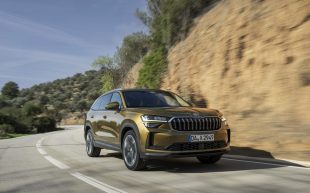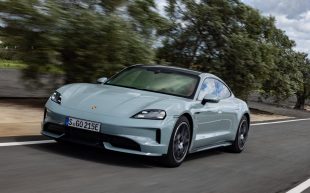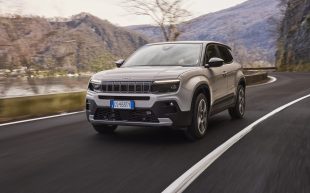First Drive review: BMW 7-series 740iL prototype (2015)
Go to bed, clever seven
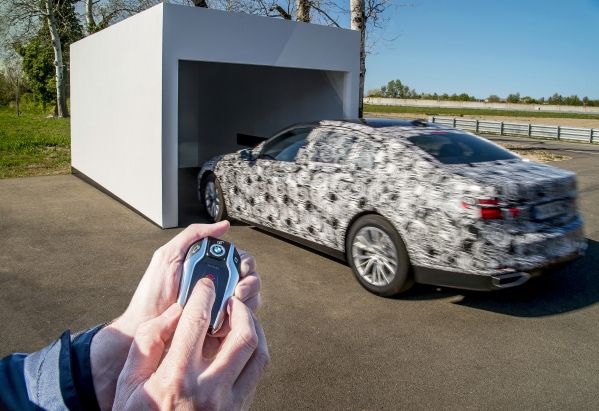
BMW 7-series 740iL prototype, price TBC
THE LUXURY car segment has moved on from polished wood to printed circuits – if you’re going to make it big at the premium end of the market today, it’s all about clever technology. That’s why BMW’s all-new 7-series is absolutely loaded to its roof with tech designed to make life safer, easier and more fun with it.
Search for and buy your next car on driving.co.uk
No surprise, then, that BMW describes the new 7-series as the most technologically advanced car it has ever made. It’s the company’s response to the 7’s deadly rival, the Mercedes-Benz S-class, and BMW says that it is already winning the tech battle.
As for how the new 7-series looks, we’ll have to wait a while as the car we drove was still camouflaged, but suffice to say the design is gently evolutionary rather than the style revolution that was, for example, the radical 2002 7-series by Chris Bangle, the former head of design.
Inside, though, its all change – while the interior of our car was also camouflaged, the simulator for the infotainment system was much truer to the production version. This featured a beautifully flowing dashboard with a striking, large display screen rising up from the dash.
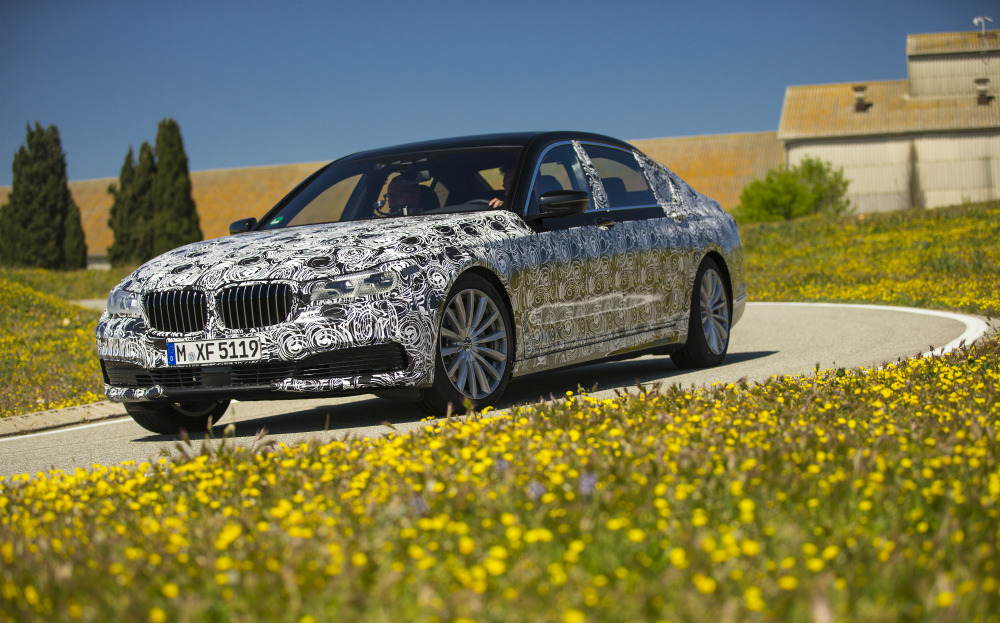
And that’s where the first serious volley in the tech wars comes – the infotainment system in the 2015 BMW 7-series uses touchpad technology of the sort found on tablets and smartphones to control most of the car’s functions.
Key to it all is the large tablet-like screen, with which the driver or front seat passenger can manipulate the climate control, navigation, audio systems, emails, texts, phone calls and more. It’s a really slick piece of kit, allowing you to program the nav system, adjust car settings, access media players and much more by just tapping a series of icons – iPhone users will find it very familiar territory.
One of the coolest things is the ‘gesture control’ feature, which allows the control of selected functions with nothing more than the wave of a hand… to raise the radio volume, rotate your finger clockwise near the screen
But one of the coolest things about this interface – one which BMW says is a world first – is the ‘gesture control’ feature, which allows the control of selected functions with nothing more than the wave of a hand.
For example, if a phone call comes in and is displayed on the screen, you only have to point at it a couple of inches from the screen to accept the call. If you want to decline, a dismissive right swipe of your hand is all it takes. And to raise the radio volume, rotate your finger clockwise and do the opposite to lower the sound.
BMW has also created a shortcut, for example, for features like navigation – point two fingers (no, not like that you naughty boy) at the sensor screen and it will activate your chosen feature, which could be a ‘navigate me home’ function, or ‘turn the screen off’ or any other function you want quick access to. I played around with the system and but for a couple of hesitations, it worked well.
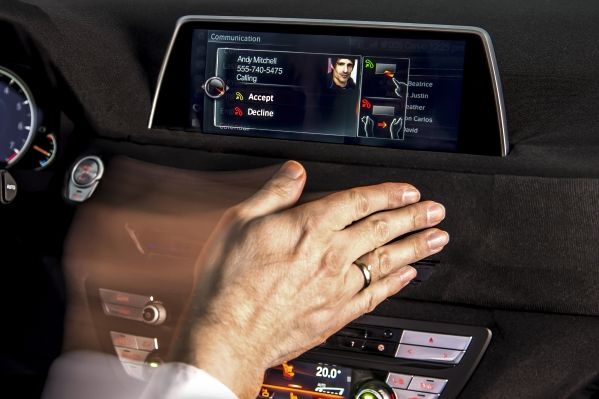
BMW says that eventually, more functions will be added to ‘gesture control’ and ultimately, owners could be able to customise their own gestures. When I joked that an owner could choose a middle finger gesture to decline calls, a BMW tech expert came over all serious and admitted that this was actually an issue for them in developing the system. He said that people outside the car might think they were the object of such rude gestures, which could be problematic…
When I joked that an owner could choose a middle finger gesture to decline calls, a BMW tech expert came over all serious
But BMW has also carried over the iDrive system with its conventional dial-controlled menu system – the reasoning is that many current BMW drivers are used to the system and might miss it, and ‘older’ drivers might find the newfangled touchpad/gesture control business a bit intimidating. There is also an improved voice control system that responds more accurately to a conversational style of command, i.e. ‘find me an Italian restaurant’ or ‘turn the heat up’.
Another intriguing bit of the dash layout is the instrument panel, which is completely digital. When the speedo or revcounter needle sweeps around, the numbers are magnified as it passes them, much the way the icons on an Apple Mac are as you pass the cursor over them.
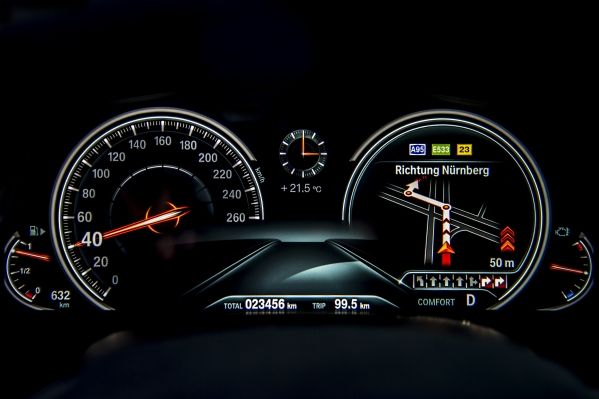
And BMW is claiming another world first for the new 7-series: it can actually park itself without a driver being on board. This feature, which can be triggered by the key fob, allows the car to travel up to one and half times its length in driverless mode. Once the car is lined up at a maximum 10 degrees to the desired parking spot or garage – you do have to more or less point it in the right direction – the car does the rest (and can exit the spot in the same way).
BMW says this will be ideal for parking in very tight spots, with as little as 20cm of space needed on either side of the car. But BMW does admit, rather sheepishly, that this could cause problems for returning drivers parked beside such a tightly squeezed 7-series.
The new 7-series can park itself without a driver being on board… BMW says this will be ideal for parking in very tight spots, with as little as 20cm of space needed on either side of the car
The new 7-series is also brimming with ‘driver assist’ tech. There is, for example, a steering assist function that gently nudges the car back into its lane if the driver wanders – this is a feature that typically works with cruise control, but in the BMW, it functions even without cruise activated. Another feature detects cars in the driver’s blind spot and aggressively intervenes with steering input if the driver signals and attempts to move into the path of a car passing from behind.
BMW has also taken dramatic steps to reduce the 7-series weight – the new car weighs some 130kgs less than the car it replaces. Carbon fibre and aluminium have been used for strategic parts of the car’s structure, and brake and suspension components are also lighter.
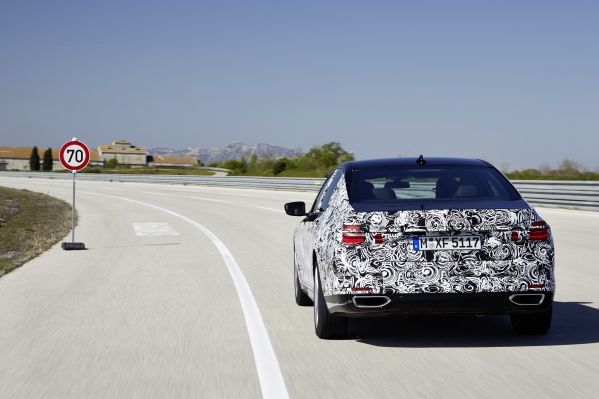
My experience of the pre-production prototype 7-series on the road revealed a car that changed direction with agility and stability – driven quickly over a closed circuit handling course, the 7 was actually good fun to pedal. That’s not something many in the class can claim, so the early signs are encouraging.
Steering feel was also good, and the adaptive suspension system worked a treat – this analyses how you’re driving and even what terrain you’re traversing with data from the sat nav and adjusts the throttle, steering and suspension settings to suit. Drive gently and everything relaxes, from the throttle response and steering weight to the suspension stiffness. Set your trousers on fire and the opposite happens.
The other aspect of the big BMW, apparent almost within the first couple of miles, is the extraordinary level of noise and ride refinement. Granted, our car had disguise panels all over the interior, but I’ll still wager that the new 7 will give the Mercedes S-Class a bit of a fright.
The car we drove had BMW’s new twin-turbo straight-six petrol engine, which will be badged as a 740 – the company hasn’t released figures yet, but it’s likely to pack more than 320bhp. It delivered smooth and potent performance with particularly strong mid-range punch.
The new 7-Series goes on sale around November time this year, priced competitively with the Mercedes-Benz S-class. It’ll be printed circuit boards at dawn, I reckon.
2015 BMW 7-series rivals
Mercedes Benz S350 BlueTEC SE, £66,910
- For Fantastically refined and luxurious
- Against It’s quite dull to look at compared with some rivals
Jaguar XJ Premium Luxury, £66,000
- For: Graceful exterior styling, especially in long-wheelbase guise
- Against: Rear headroom not as good as the German’s


